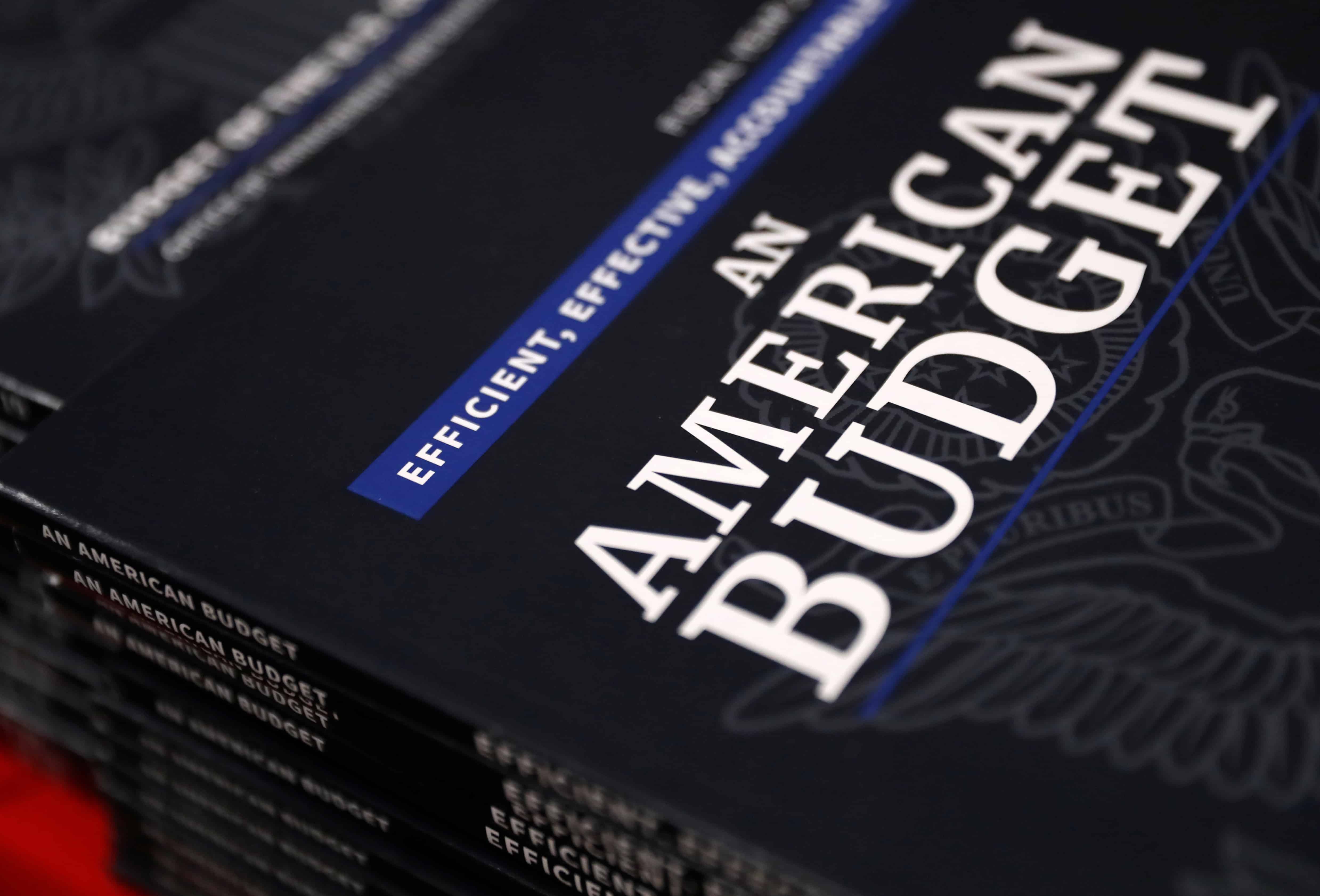The Trump budget reflects American values, but betrays the American people.
The US budget is incredibly complex, full of mandatory and discretionary funding for dozens of agencies. The budget also tries to respond to the needs of hundreds of millions of people. As a whole, the proposed Trump budget does not support the common good or preferential option for the poor. It relies on increased military spending and drastic decreases in programs that support the poor and the marginalized.
This budget, however, is not at all new in this regard. For decades, we’ve seen increases in military and law enforcement, while shortchanging vital programs like SNAP and Section 8 Housing. These discrepancies often rely on a false narrative of the undeserving poor. The budget reflects some of the worst parts of our American identity, such as disregard for the poor, the marginalized, and the common good.
While it would be easy to blame Trump for this budget, it is a reflection of the politics and the people that elected him: America. It is time for us to take a serious look at how the budget is a moral document, and how we must radically alter it to serve the common good.
Opioid Epidemic (Department of Health and Human Services and Department of Justice)
Trump’s proposed budget rightly seeks to tackle the American opioid epidemic. The drug crisis is impacting rural, urban, rich, and poor communities alike. According to The Hill, addiction deaths increased over 25% from 2015 to 2016. In response, the administration is proposed $13billion in funding directed toward curbing drug trade and funding addiction recovery. The Department of Health and Human Services offers a 5-part plan: improving prevention, treatment, and recovery; increased availability of overdose-reversing medicine; better public health data and report; research on pain and addiction; and better care practices for pain management. Beyond those five goals, however, the exact how-to becomes much murkier. Moreover, increased funding would go to law enforcement and the justice system for tough-on-drug legislation and arrests.
While the war on drugs looks good, it’s incredibly ineffective, costly, and damaging to communities. As a whole, Trump is commendable for making an effort to tackling the opioid crisis. His proposed funds, however, would be much better utilized using a public health framework that addresses the myriad of factors around drugs, such as despair deaths, rampant poverty, and other health factors.
Farmers, Food Stamps, and Forests
The Department of Agriculture (USDA) could have its own article. This agency maintains many absolutely vital sub-agencies and programs, such as SNAP, grain and meat inspection, conservation programs, the Forest Service, Rural Development, and more. Each of these plays incredibly important roles in the US and is needed perhaps now more than ever. As a whole, the proposed budget would cut USDA funding by $3.5billion, or about 15%. The department, however, has relatively small expenditures when compared to others; but its programs have incredible impact.
For example, the proposed budget would eliminate crop insurance programs. The insurance supports farmers in cases of underperforming crops or natural disasters. Proponents of the cuts say it would save $20billion over the next decade. The budget would also eliminate or reduce loan programs that help farmers to update their homes. However, farmer income is at a 12-year low. Moreover, the loneliness, economic tumult, and difficulty of farming is taking its toll. Farmers now have a suicide rate five times that of the general population and double that of veterans. It is abundantly clear that these programs must remain.
The threats to the USDA budget also include reducing SNAP, cutting conservation programs that not only protect the environment but increase the viability of farms, attempts to push the cost of food safety onto the farmers and ranchers themselves. While not perfect, these programs have nevertheless been incredibly impactful and important for supporting the poor and the common good.
National Park Service (Department of Interior)
Parks are one of my absolute favorite aspects of the US, preserving both our natural beauty and our national history. Its service to the environment and the well-being of communities is astronomical. Under the proposed budget, Department of Interior (DOI) funding would decrease 11.5%, focused largely in cutting what Trump describes as duplicate programs and redundant jobs. Despite park visitation at its highest ever, those cuts will lay off over 1,800 NPS employees. The budget offers to address the massive backlog of deferred maintenance through $18billion in new funding. However, only $257million will be guaranteed – the other $17.743billion comes from massive land sales, leases, and oil/mineral extraction that doesn’t currently exist, but the budget assumes will exist in the next 10 years. These sales also assume the ability for the DOI to sell off massive amounts of public land.
You might be thinking that issues surrounding national parks don’t exactly demonstrate preferential option for the poor. And in a way, you’re right – as it stands, park visitation is overwhelmingly wealthy, white, and those with easy access to travel. These patterns often lean on negative/positive stereotypes that hurt the community’s future. My fear is that the proposed budget cut pieces like the Office of Relevance, Diversity, and Inclusion, further endangering public lands and the communities they serve. Whereas I would hope to see drastically increased funding for the NPS, especially to employ and serve poorer communities, the Trump budget significantly decreases funding.
Amtrak, Independent Agency
I love trains. I grew up hearing train horns gently roll through my bedroom window on summer evenings and setting up a toy train around the Christmas tree. Living in Milwaukee, I frequently take the train between here and Chicago, and have taken it several times on cross-country adventures. According to a CityLab in 2012, Amtrak’s ridership is up 49% since 2000, but still depends on states and the federal government for funding. The current Trump proposal pushes funding for long-haul rides (think LA to Chicago) from federal to state governments. The budget will almost halve Amtrak funding from $1.4 billion to under $750million. Millennials (myself included) are moving more toward trains and other transit. Decreasing funding here would negatively impact rural and urban communities alike, as well as the future of train ridership.
While often having beautiful routes, Amtrak provides other key qualities. As a country, we desperately need to address climate change. Trains produce significantly fewer carbon emissions than cars and planes, especially in places like the Northeast Corridor. Several projects have proposed increasing high speed trains between major cities, such as the Twin Cities to Chicago (with possibilities of later adding St. Louis and New Orleans). Such projects could drastically reduce travel’s environmental impact. Moreover, trains provide valuable service to incredibly rural and frequently underserved communities. Amtrak reaches about 40% of America’s rural population, frequently in places that buses and planes do not go. Decreasing funding for Amtrak threatens both attempts to fight climate change, as well as serving rural communities.
The Whole Budget
As a whole, the budget attempts to reduce American spending and cut what Trump deems frivolous or ineffective spending. The proposed budget, however, places that burden not just primarily on the poor and marginalized, but on the common good as a whole. This budget would prove incredibly detrimental to vital programs that sustain the American people. Some of the budget has strong intentions – attempting to aid those struggling with addiction – but uses techniques that have proved ineffective. Other portions, however, are abhorrent in the harm they do. To solely blame Trump for this budget would be a falsehood. This is a budget that projects and supports American values at play over the last few decades. America must take a deep, long, and likely painful look at how the budget mirrors its beliefs, and clearly change for the good of all.
For additional reading, check out the following:
Breakdown of budget changes by department


